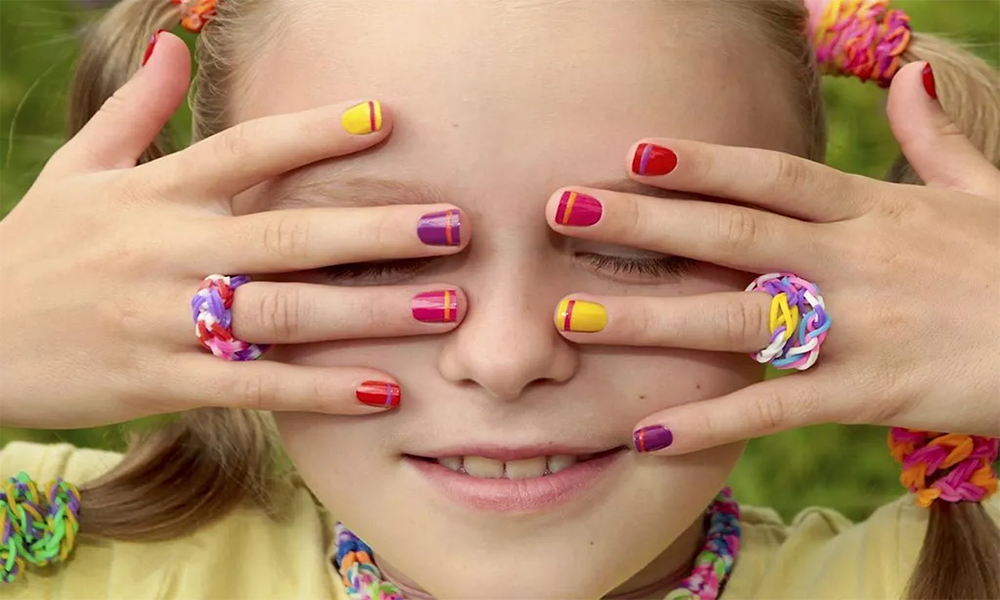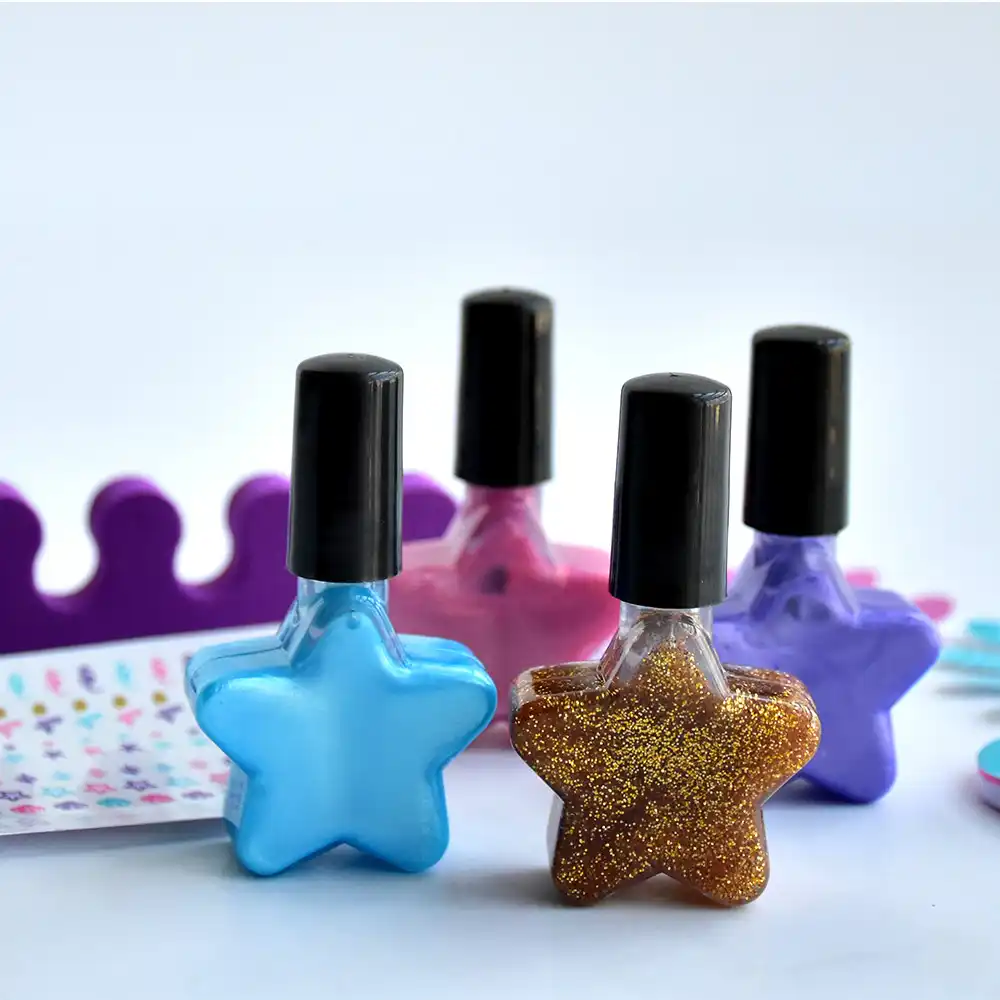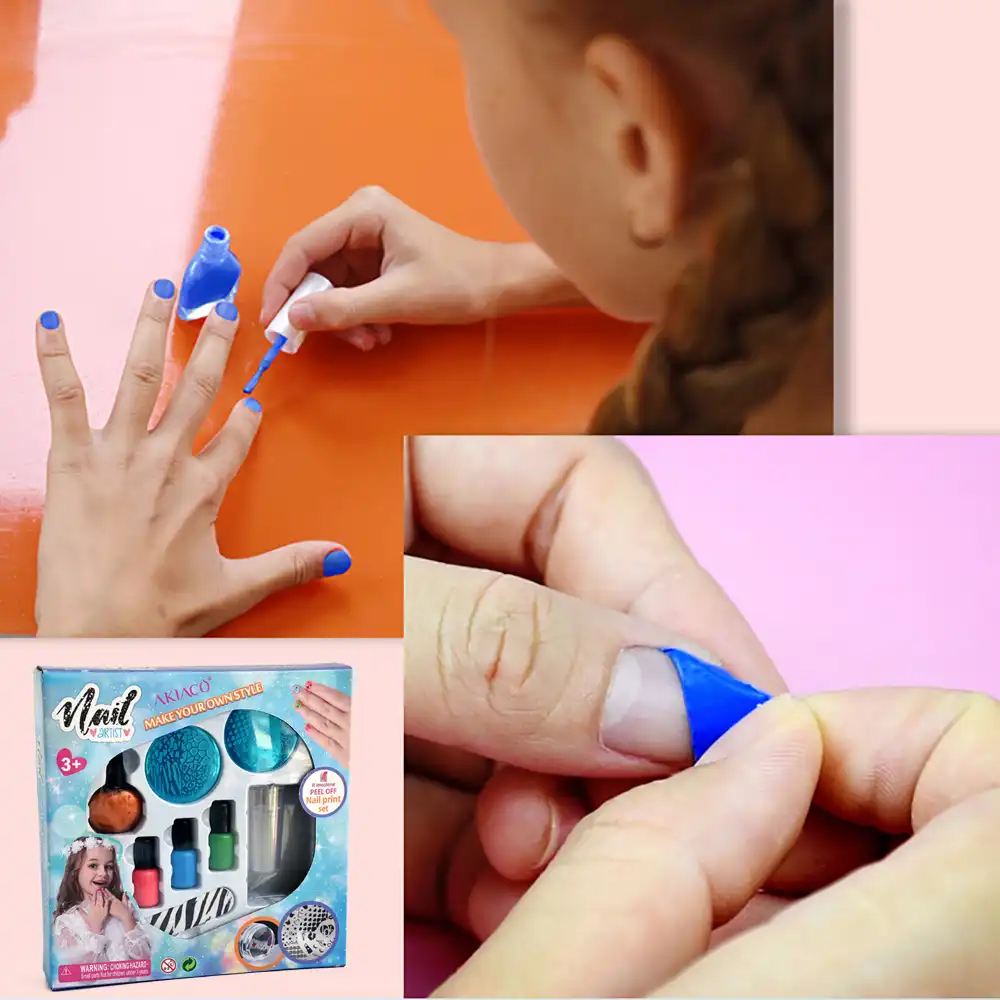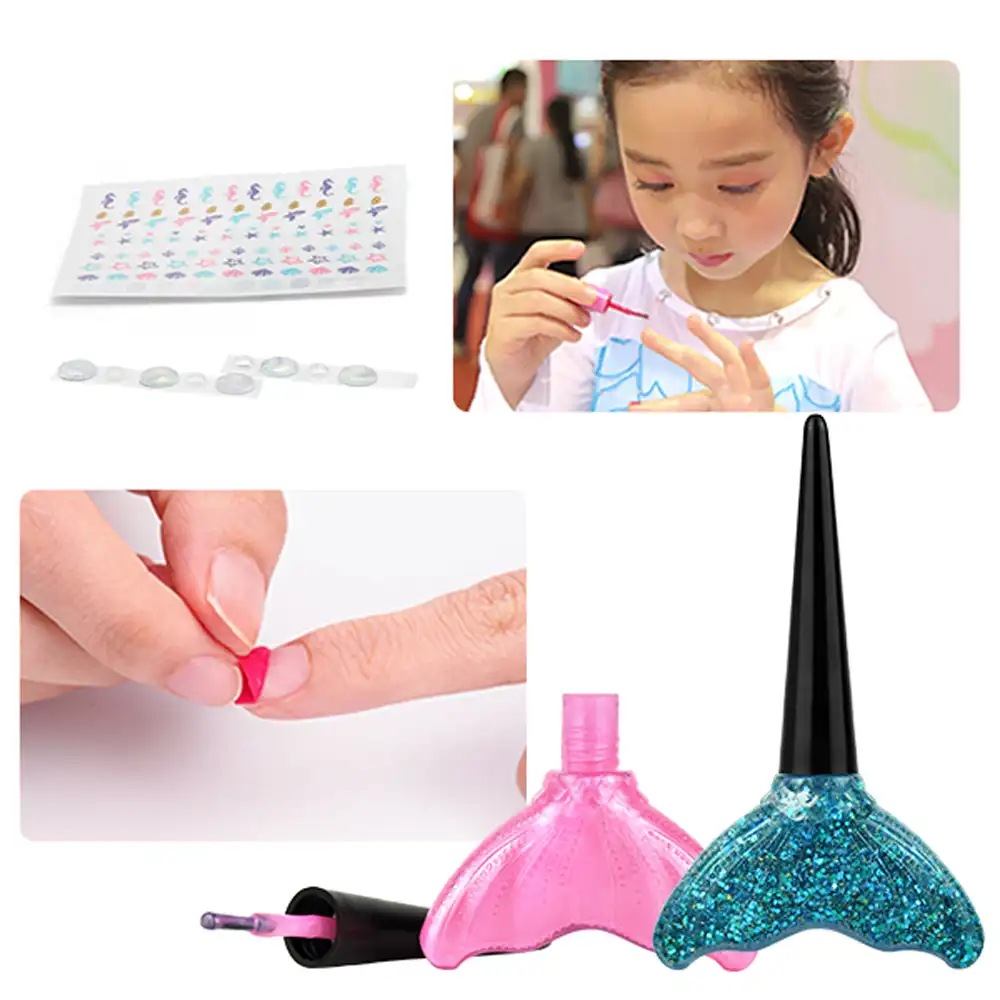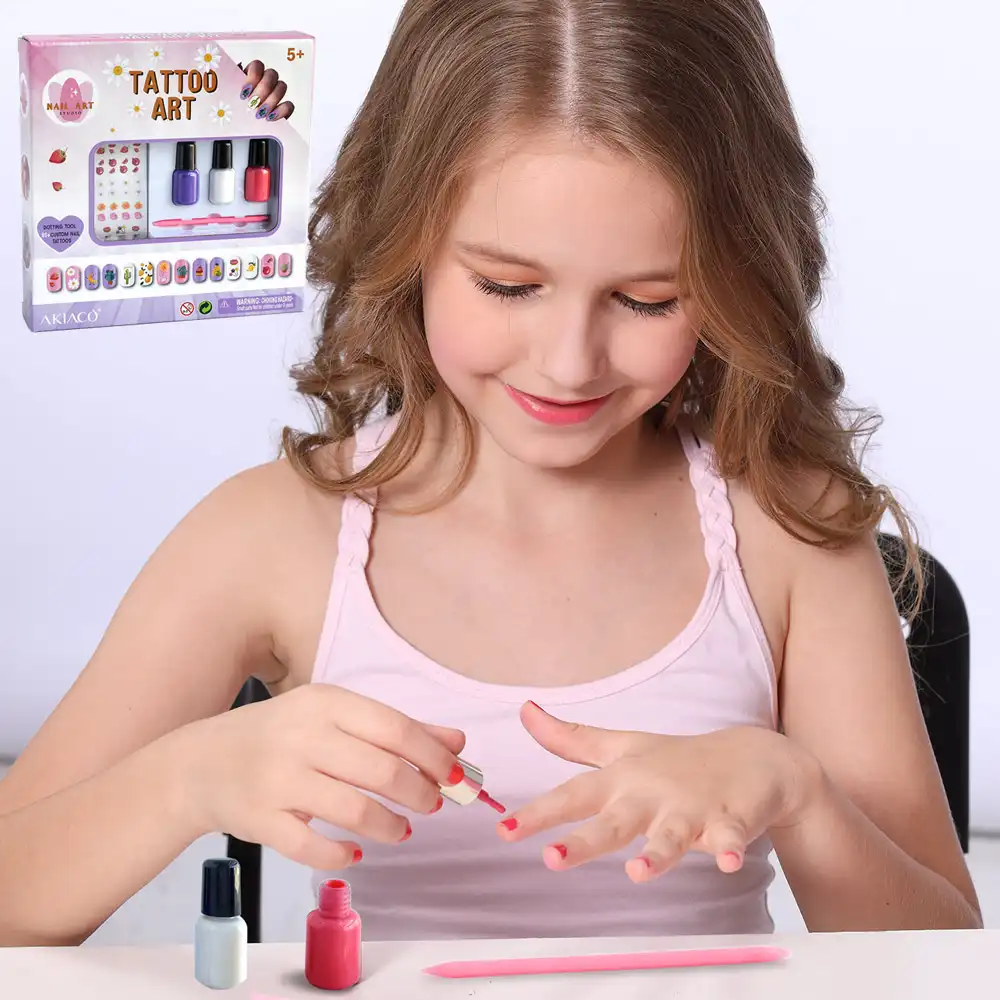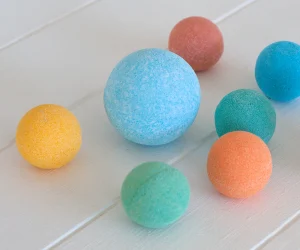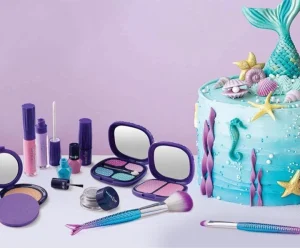Do You Need Special Nail Polish for Kids? A Complete Guide
Table of Contents
Children’s nail polish is often made with different ingredients and design features than adult products. The idea is to reduce exposure to certain chemicals while making the polish easier to remove and less likely to damage young nails. But “special” can mean many things, from water-based formulas to peel-off designs, so it’s important to know what sets them apart before deciding.
How Kids’ Nail Polish Differs from Adult Formulas
A typical kids’ nail polish formula often skips strong solvents like toluene or formaldehyde. Instead, it may use water or plant-based binders. This can make it less harsh on soft nails.
For example, a friend’s 5-year-old once painted her nails with her mom’s deep red polish. Removing it needed acetone, which left her nails looking chalky for a week. A kid-specific version might have come off with just warm water.
Some kids’ polishes are designed to peel off without remover. While this sounds fun, it can also tempt children to pick at their nails, which might cause splitting. Parents sometimes don’t consider this trade-off until it happens.
Common Concerns About Conventional Nail Polish for Children
One common worry is ingredient safety. According to the American Academy of Pediatrics (AAP, 2021), certain solvents and plasticizers in regular polish can cause skin irritation or allergic reactions in sensitive kids.
Another concern is inhalation. Kids often sit close to the brush while painting. Strong-smelling fumes from adult formulas can be irritating, especially in small, unventilated rooms.
Then there’s durability. Adult nail polish is made to last, meaning it needs stronger chemicals to stick. This durability can also mean longer exposure time if a child wears it for days without chipping. Even small details—like how much polish touches the cuticle—can matter.
Key Ingredients in Special Nail Polish for Kids
Children’s nail products are often designed with simpler formulas. The focus is on reducing harsh chemicals, making removal easier, and keeping application safe. Knowing what’s inside helps you choose wisely and avoid unnecessary risks.
Water-Based vs. Solvent-Based Formulas
Water-based polishes replace strong solvents with water as the main carrier. This makes the polish less likely to release strong fumes during use. However, the color may fade faster.
Solvent-based formulas use chemicals like ethyl acetate for a smooth, long-lasting finish. But they can have stronger odors and may be harsher on soft nails. Kids’ versions sometimes use milder solvents to strike a balance.
Some parents prefer water-based for toddlers because cleanup is easier. Others choose solvent-based for older kids who want longer wear. It’s less about “better” and more about matching the formula to the situation.
Ingredients to Avoid in Kids’ Nail Products
Not all ingredients are harmful, but some can cause problems for young users. Certain additives in adult nail polish are linked to skin irritation, allergic reactions, or respiratory discomfort.
Formaldehyde, Toluene, and DBP
These three chemicals—sometimes called the “toxic trio”—are often flagged by dermatologists. Formaldehyde can cause skin sensitivity. Toluene affects air quality during application. DBP (dibutyl phthalate) has raised concerns in long-term exposure studies. Many kids’ nail polishes avoid them entirely.
Fragrance and Artificial Colors
Added scents can make nail polish smell “fun,” but synthetic fragrances can trigger allergic reactions in some children. Artificial colors, especially certain dyes, may also cause mild irritation. Choosing unscented or naturally tinted formulas reduces these risks.
Safety Considerations When Choosing Nail Polish for Kids
Choosing nail polish for children is not just about colors or glitter. Safety starts with understanding what labels mean, checking ingredient lists, and considering a child’s unique skin needs. A little homework can go a long way in avoiding trouble.
Understanding Non-Toxic Labels and What They Really Mean
When a bottle says “non-toxic,” it might sound like a free pass—but it’s not always that simple. In the cosmetics world, “non-toxic” is not a legally strict term in many countries. It can mean the product avoids some well-known harmful chemicals but still contains others that may irritate skin or cause allergic reactions.
Some polishes claim to be “3-free,” “5-free,” or even “10-free,” referring to the number of banned or avoided ingredients. For example, “3-free” usually means no formaldehyde, toluene, or DBP. But parents should still read the ingredient list, since other additives like synthetic dyes or fragrances may be present.
Importance of Skin Sensitivity and Allergy Testing
Children’s skin is thinner and more reactive than adult skin. This means a substance that feels fine to a parent might cause redness, itching, or swelling on a child. Doing a simple patch test—applying a small amount of polish to one nail and waiting 24 hours—can help spot potential reactions before a full manicure.
Seasonal changes, like winter dryness or summer sweat, can also affect how skin reacts to polish. A child who tolerates a product in one season might have irritation in another, so occasional re-testing is a smart habit.
Is Special Nail Polish Really Necessary for All Kids?
Not every child will need the most specialized nail polish on the market. The decision depends on their age, how often they use it, and how their skin responds. Looking at these factors can help parents strike the right balance between safety and practicality.
Factors to Consider — Age, Frequency of Use, and Skin Sensitivity
Younger children, especially under five, tend to put their fingers in their mouths more often. In those cases, using kid-specific, water-based formulas can reduce the risk of swallowing harsh chemicals.
Frequency matters too. A weekly manicure for fun is different from wearing polish every day. The more frequent the use, the more cautious one should be with ingredients. Skin sensitivity also plays a big role; a child with eczema or a history of allergic reactions may benefit from gentler, specially formulated products.
Situations Where Regular Nail Polish May Be Acceptable
For older kids who rarely wear polish—say, only for a special event—using a standard, high-quality adult polish may be fine, provided it’s free from the most concerning chemicals.
It’s also possible to make regular polish safer with a few tweaks: apply a base coat to reduce direct contact, ensure good ventilation during application, and remove it after a short period. In these cases, the key is minimizing exposure, not banning the product entirely.
Benefits of Using Specially Formulated Nail Polish for Kids
Kid-specific nail polishes are often made with gentler ingredients and lighter scents. They aim to make nail playtime safer and easier for young users without taking away the fun.
Easier Removal Without Harsh Removers
Many children’s nail polishes are peel-off or water-based, meaning you can skip acetone or other strong removers. That’s a win for avoiding dry nails and irritated cuticles.
For parents, it also means less mess. A quick soak in warm water or gentle peeling after a bath can get rid of the polish without the sharp smell of remover bottles.
Reduced Risk of Inhalation of Strong Fumes
Standard solvent-based polishes often release strong vapors during use. In small, enclosed spaces, these can be unpleasant—or overwhelming—for kids.
Special formulas tend to have milder scents or none at all. This makes at-home nail sessions more comfortable, especially for kids who are sensitive to smells or prone to headaches.
How to Apply Kids’ Nail Polish Safely
Even with gentle formulas, safe application helps protect a child’s nails and skin. Small changes in prep and technique can reduce the chances of irritation or infection.
Prepping Nails Without Damaging Them
Start with clean, dry hands. Skip aggressive filing or pushing back cuticles—kids’ nails are softer and more fragile than adults’.
Instead, shape nails gently with a fine-grit file and wash hands with mild soap to remove dirt or lotion before painting.
Step-by-Step Safe Application Tips
Work in a well-ventilated area. Apply a thin base coat if desired, then a single layer of polish. Let it dry fully before adding a second coat.
Avoid painting right up to the cuticle; this helps prevent polish from getting under the skin, which can cause irritation.
Hygiene Practices to Prevent Nail Infections
Always use clean brushes and tools. Don’t share nail polish bottles with others if possible, as this can spread bacteria or fungi.
After removing polish, let nails “rest” for a few days before the next application to give them time to breathe and recover.
Tips for Removing Kids’ Nail Polish Without Harm
Safe removal protects both nail health and skin. The gentler the method, the less chance there is of dryness, peeling, or irritation.
Gentle Removal Methods for Water-Based Polish
Most kids’ water-based polishes can be removed by soaking nails in warm, soapy water for a few minutes. Then, gently peel or rub the polish away using a soft cloth.
If peeling, always lift from the edge and avoid pulling too forcefully—this reduces the risk of taking a layer of the natural nail with it.
Avoiding Acetone and Harsh Solvents
Acetone and strong solvents can strip oils from nails, making them brittle. They can also cause skin dryness or stinging, especially in children with sensitive skin.
Opt instead for acetone-free removers or simply stick to peel-off or soak-off water-based options that don’t require any chemical remover at all.
Fun and Educational Aspects of Kids’ Nail Polish
Beyond safety, kids’ nail polish can be a creative and skill-building activity. It offers a colorful outlet for imagination while teaching early self-care habits.
Encouraging Creativity and Color Play
Let children choose colors and patterns to express themselves. You can introduce themes—like matching polish to an outfit or creating seasonal designs—to make it more engaging.
This not only sparks creativity but also helps develop fine motor skills as kids learn to paint carefully within the nail area.
Teaching Kids About Safe Cosmetic Habits
Nail polish time can also be a learning opportunity. Teach children to read simple safety icons, understand ingredient basics, and follow hygiene steps before and after application.
By making safety part of the fun, kids start building a healthy approach to cosmetics that can last into adulthood.
Common Mistakes Parents Make with Kids’ Nail Polish
Even with the safest products, missteps in use can lead to unnecessary risks. Awareness can prevent damage to nails and skin over time.
Applying Too Often Without Nail Rest Periods
Continuous polish use—no matter how gentle—can weaken nails over time. Schedule “polish-free” days each week to let nails recover their natural strength and moisture.
These breaks also make application days feel more special and anticipated.
Ignoring Ingredient Lists and Safety Labels
Some polishes marketed for kids may still contain potential irritants. Always read the full ingredient list and look for clear “non-toxic” or “water-based” labels.
Checking labels is especially important if your child has allergies, eczema, or other skin sensitivities.
Conclusion
Special nail polish for kids isn’t just about bright colors—it’s about safety, gentle care, and teaching healthy habits. By choosing non-toxic formulas, applying them mindfully, and giving nails time to rest, parents can make nail time fun, creative, and worry-free.
FAQ
Daily use is not recommended, even with kid-friendly formulas. Nails need rest to prevent dryness, peeling, or weakening. Limiting polish to a few times a week keeps nails healthy.
Water-based or peel-off nail polish should be removed after 1–3 days to prevent chipping or buildup. Solvent-based polish for older kids should also be limited to a few days to avoid nail stress.
Glitter polish can be safe if it’s water-based and non-toxic. However, small glitter particles may pose a choking hazard if a child puts fingers in their mouth, so supervision is essential.
Yes, children can react to dyes, fragrances, or other additives. A patch test on one nail before full application can help identify sensitivity and prevent redness, swelling, or irritation.
Keep polish in a cool, dry place away from direct sunlight. Proper storage prevents thickening, separation, and potential bacterial growth. Tighten caps to reduce exposure to air and fumes.


